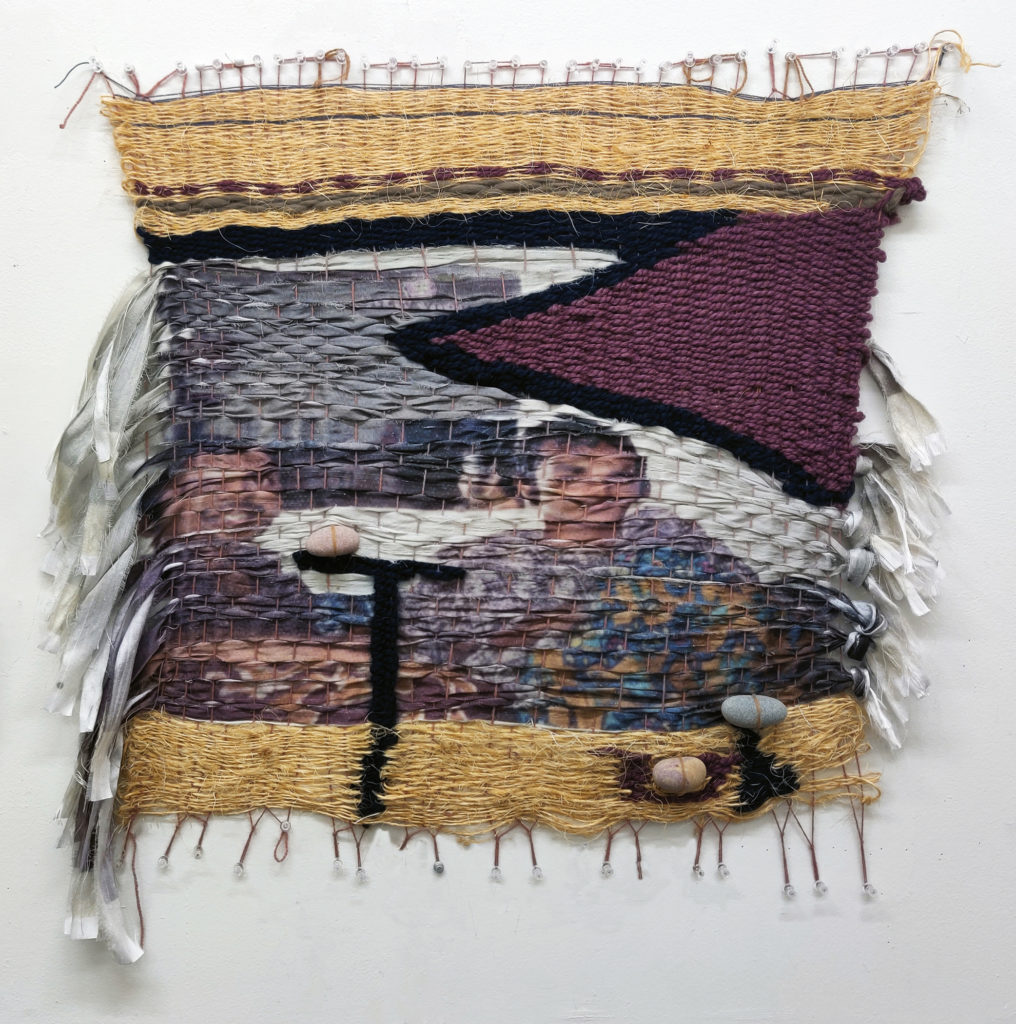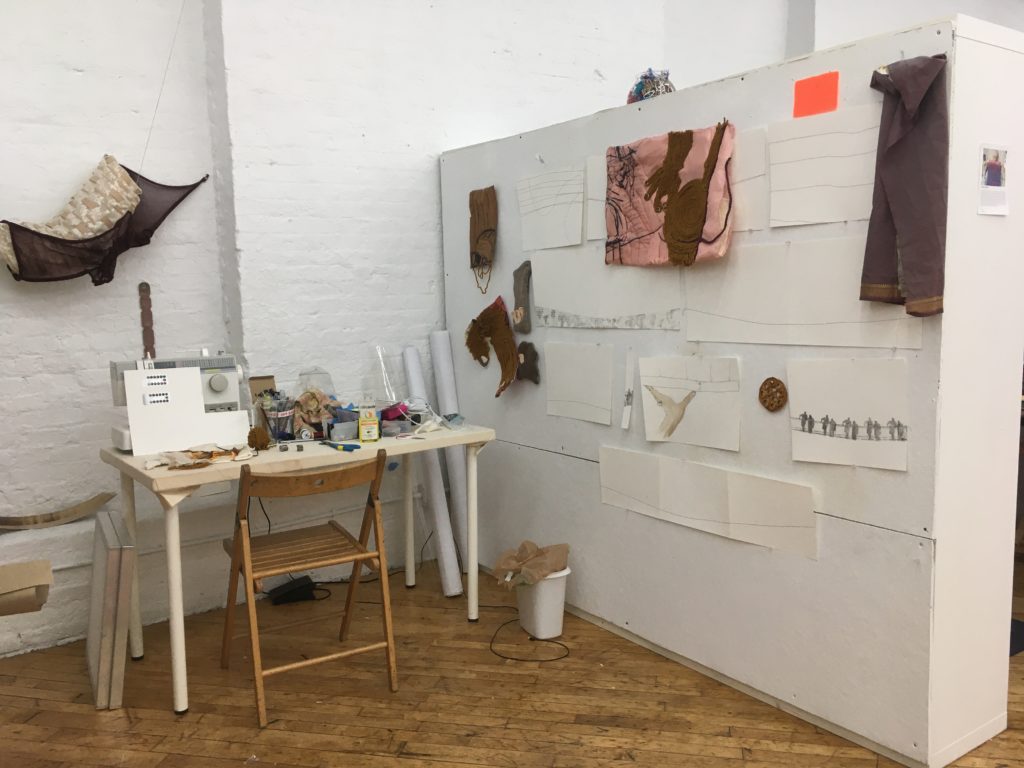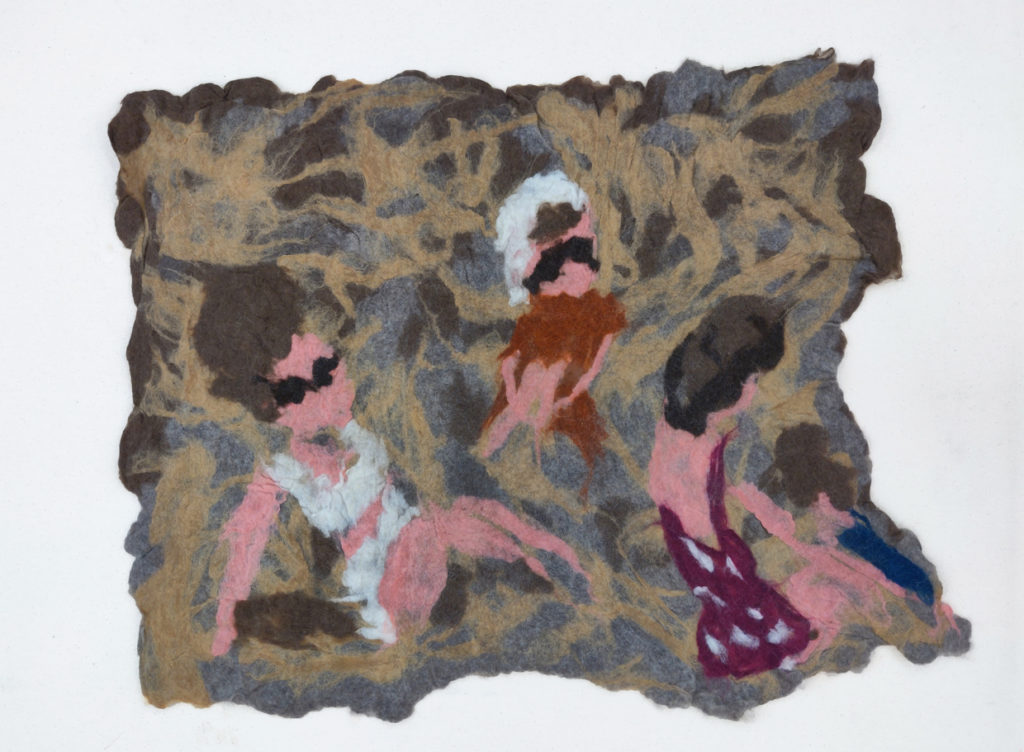AIR Artist Highlight: Melissa Joseph
TAC AIR 11 resident Melissa Joseph is a self-described feminist artist coming from a bicultural home. Born to an American mother and an Indian father, she grew up in rural Pennsylvania where such unions were uncommon. Given her years-long focus on family history, especially archival photography, it made sense to shift our conversation toward those early years during our virtual studio visit. We talked over Zoom in July 2020. From our respective Brooklyn apartments, I learned a bit about Melissa’s background, her TAC experience, and what sparked her love for felting.
While her mother was “very crafty” and taught Melissa cross-stitching, she credits her father for influencing her as a fine artist. A surgeon and a painter, her father took painting classes once a week from a woman in their small town. Young Melissa accompanied him as he made “vivid” portraits in oil or chalk pastel. But his love for aesthetics extended far beyond painting. Melissa describes her father’s style as “flashy,” with looks often drawn from the evening wear department, regardless of the occasion. He was partial to jewelry and cologne, and always had a pocket square. It was because of him that Melissa believes she was “always aware of fabric.” An inimitable rainbow wallpaper covered her childhood home—something she has incorporated in her own artwork after a house fire.

Because of her father’s impact, Melissa was always enthusiastic about art but not quite sure where she fit in. She earned her BA in Individualized Study from New York University in 2003 and an Associate’s in Textile Surface Design from the Fashion Institute of Technology in 2006. By 2008, she had her Master’s in Art Education from the Rhode Island School of Design in hand. Thus began her career as an art teacher…and a (paid) excuse to study and experiment.
“Teaching is constant professional development,” she said, crediting the profession for forcing her to develop new skills, from darkroom photography to graphic design to sculpture.

But she did not feel teaching in a K-12 classroom setting long-term was a good fit. She wanted more flexibility and a greater devotion to her individual work. In 2016, following the death of her father, Melissa decided to pursue her practice full-time. Along with that move came the decision to take on residencies and alternative teaching gigs through short-term and part-time opportunities. (This new lifestyle took her from Rome to Cincinnati and from Switzerland to Napa. These teaching gigs happened when I was teaching full time.) She went on to earn her MFA from the Pennsylvania Academy of the Fine Arts in 2018. Solo exhibitions overlapped with her studies and continued coming after she completed her degree: Rider University in Lawrenceville, NJ, Astor Center in New York City, Fleisher Art Memorial in Philadelphia, and others.
Winning the Fleisher Wind Challenge—a national call—gave her a year to develop a body of work. At Fleisher, her exhibition, “Tharavadu” (the Malayalam word for “ancestral home”), involved ceramics, 3-D wovens on printed silk, and drawings. The exhibition was deeply informed by her exploration of family photos and heritage, which she says help her grieve the loss of her father. “Tharavadu” was a true example of an artist who has historically “switched media” connecting her work with a cohesive theme.
Melissa came to TAC because she felt ready to return to New York City and dedicate herself to textiles. So she moved back to NYC last summer, accepted a full-time job as a grant manager, and “things fell into place.” At TAC, she took up felting for the first time.

“Felting changed everything,” she said. “The way I make images is painterly, but with textiles.” In the past, she had trouble committing to painting because she didn’t know how to define herself: “I struggled with the question of, What kind of painter am I? With felting, you make the substrate and the painting at the same time.”
“Felting changed everything,” she said. “The way I make images is painterly, but with textiles.”
The natural next step for her seemed to be depicting her family’s archival photos in felt—so that’s what she did. Remarkably, it was brought to her attention in her final TAC critique, that Melissa was not in any of the images. Since then, she has been reflecting on her place as her family’s “disassociated observer.”

During the COVID-19 quarantine, she has found herself “working on things that relate to the past, but not the future.” She asserts that this is “a productive time for people who work that way,” compared to artists whose practice is geared more toward the present or future.
“I am productive as I would like to be 20% of the time,” she quipped, explaining that her studio time comes after work. “Hours later, I’ve found that I’ve read one page and basically eaten popcorn.”
But before and during the pandemic, Melissa has found solace and inspiration at TAC. She relished the field trips, especially the visit to the Antonio Ratti Textile Center and Reference Library at the Metropolitan Museum of Art, and called every guest teacher “awesome.”
“This is a supportive, critical, accepting community,” she said.
Melissa's work was featured in the Subtle Speaks, TAC AIR 11 Final Exhibition (September 19-28, 2020). Check the online exhibition to see more from this artist.